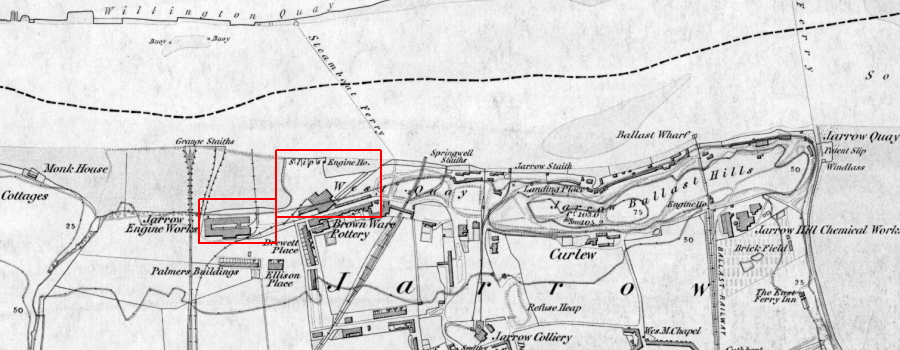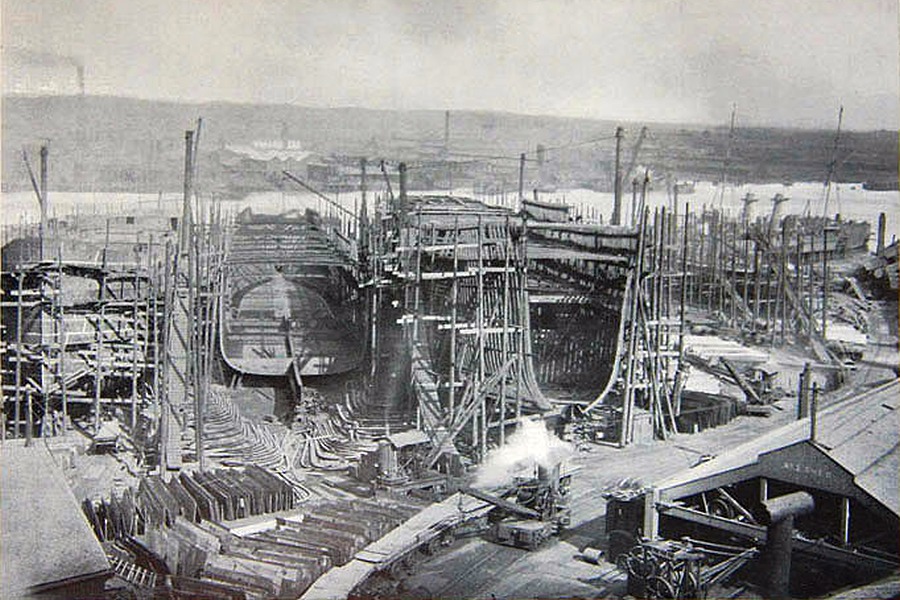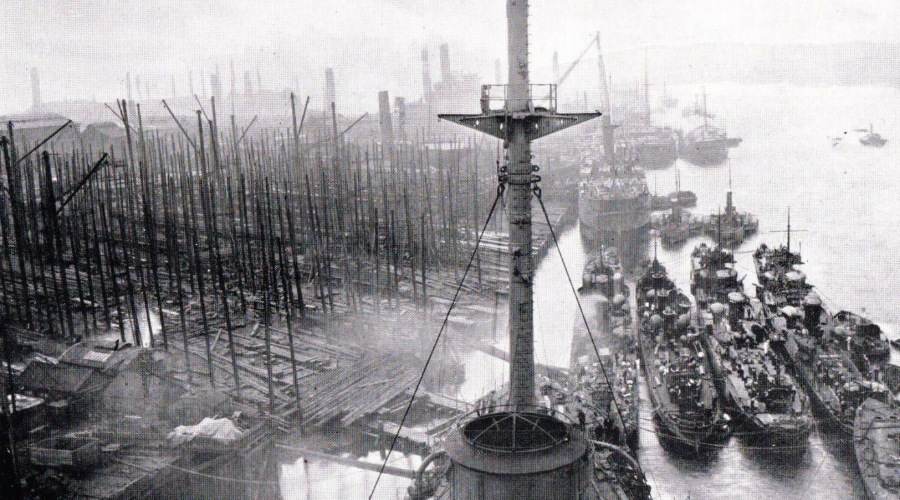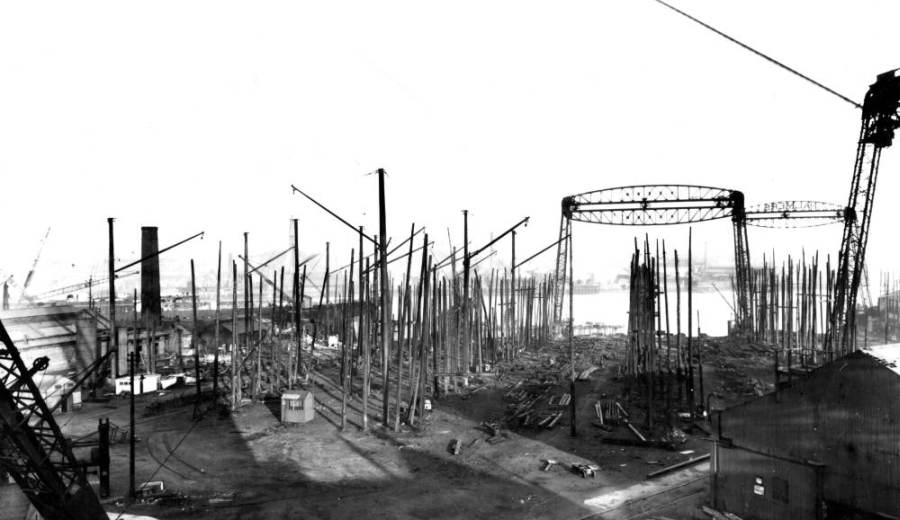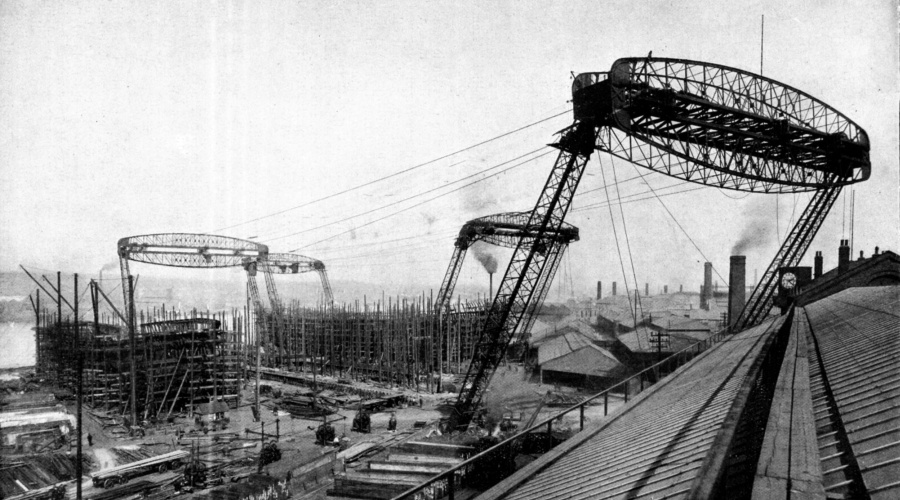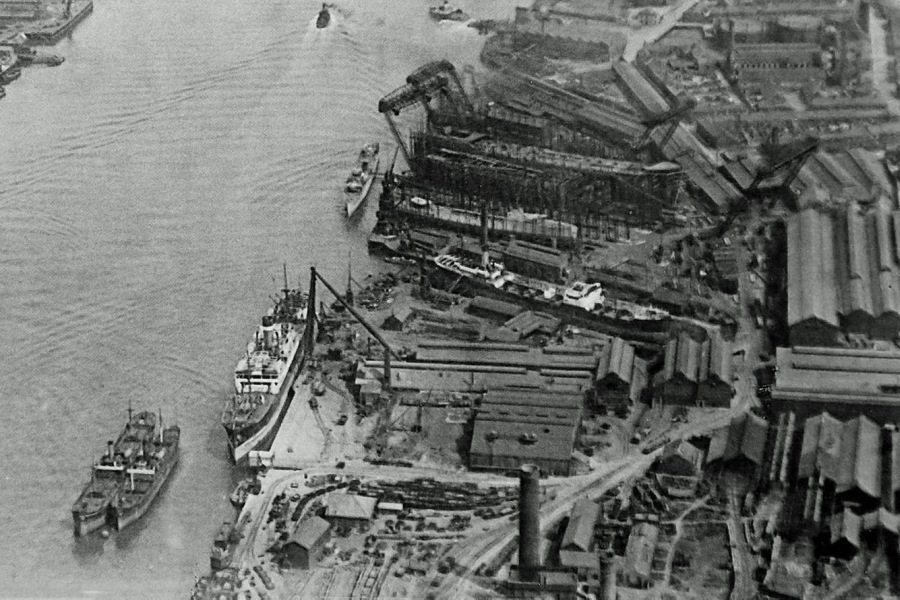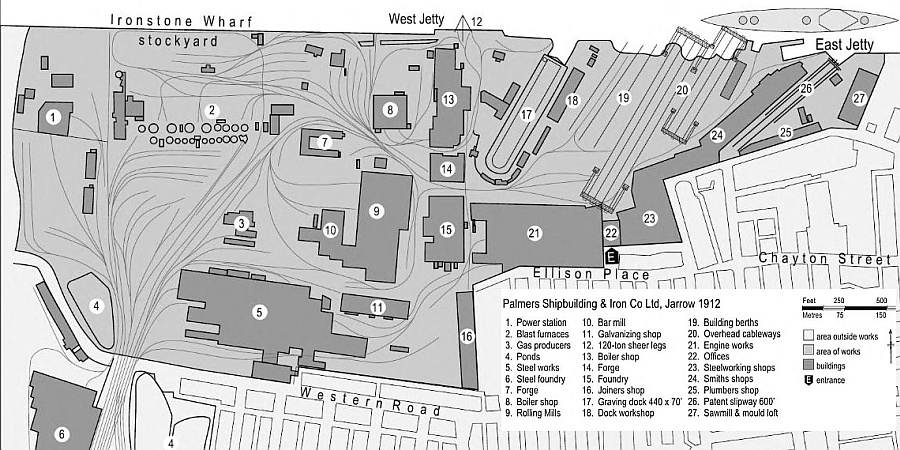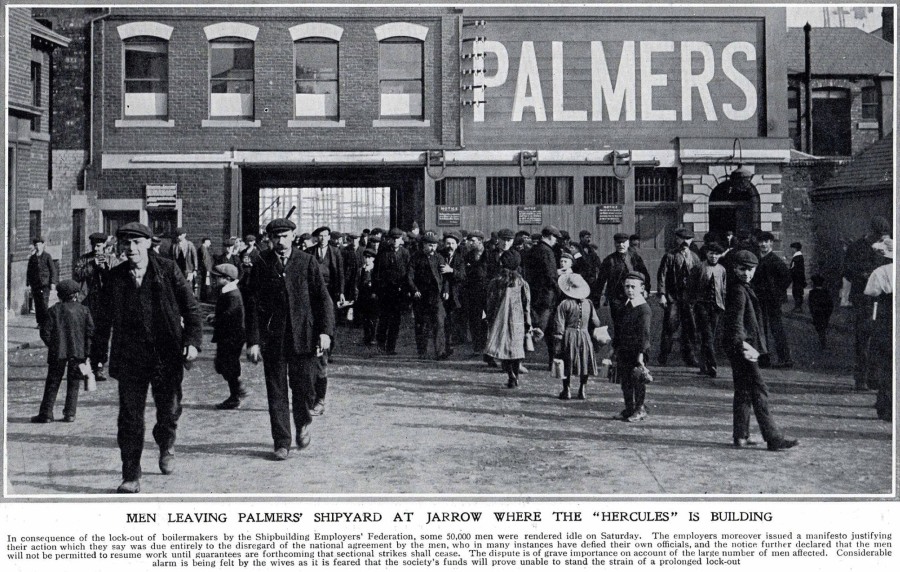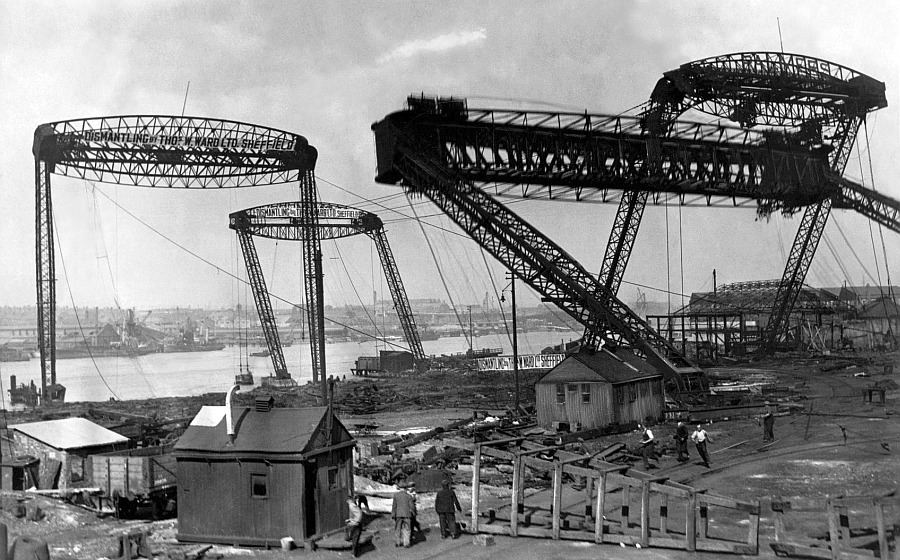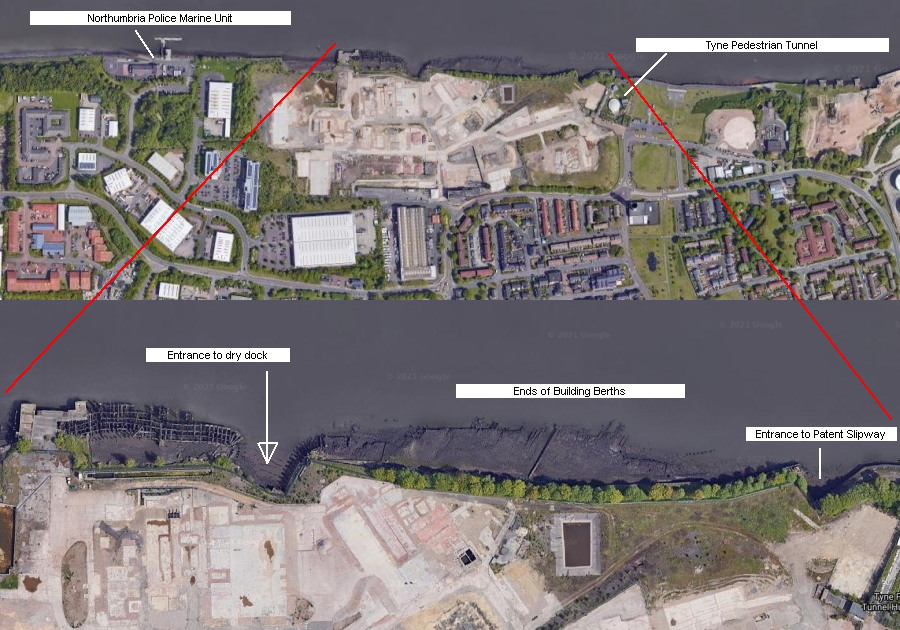|
In 1851 Charles Mark Palmer established his own shipyard at Jarrow with his elder brother George.
The land for the yard had previously been used by Simon Temple, Thomas Brown, Holt & Walker and Thomas Metcalf(e) for building wooden sailing ships and was leased from Mr Carr-Ellison of Hebburn.
The yard already had building slipways and a patent slipway for repairing ships and the following year the company built its own engine works on the site.
Above map dated 1856 shows the initial Palmer yard & engine works at Jarrow. Map is copyright of Ordnance Survey In 1852 they built the iron collier JOHN BOWES which was to revolutionise the coal trade between the Tyne and Thames. 1854 First rolled armour plate for warships was produced. In 1857 they commenced construction of blast furnaces at Jarrow and rolling mills the following year. In 1865 the company was converted into a limited liability company under the designation Palmers' Shipbilding and Iron Co Ltd. Also in 1865 they opened a graving dock at the Jarrow site so that their own new vessels could be drydocked there before delivery and also to promote the ship repair side of the business.
Above plan shows the Jarrow Shipyard in 1887. Image is courtesy of Kevin Blair
Above photo, showing ships on the berths, is copyright of Tyne & Wear Museums
Above view showing the berths from the river side in 1899 is by JD Rose. Image is courtesy of John Bage In 1905 the first of two electric cableway crane networks was installed at Jarrow. This covered a berth 500ft x 100ft and was supplied by Henderson of Aberdeen and these elliptical-shaped gantries became something of a landmark on the river. The second cableway network was erected in about 1912 and covered two berths of 700ft x 75ft. Both of the systems used overhead trolleys, three in the smaller cableway and four in the larger one, capable of handling 3tons each and which could be traversed across the berth as well as running along its length, so able to position a lift above any point on the berths.
Above view shows the simple steel derricks servicing the berths on the left and the cableways on the berths to the right
Above view shows the two cableway systems. Image is courtesy of John Bage
Above aerial view shows the Jarrow yard in July 1930. The steelworks is off the bottom of the photo. Image is courtesy of Kevin Blair
Above map shows the Jarrow yard in 1912. Image is copyright of Ian Johnston & Ian Buxton
Above photo of the yard main gate & the press coverage of a strike 10/09/1910, is courtesy of Kevin Blair
Above photo, showing the demolition of the overhead cranes, is copyright of Tyne & Wear Museums
Above aerial views show the remains of the Jarrow Yard & Slipways in 2020. Image is copyright of Google |
Use the browser BACK button to return
